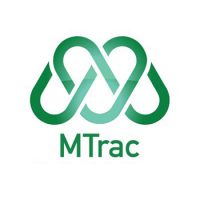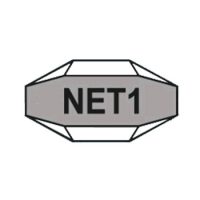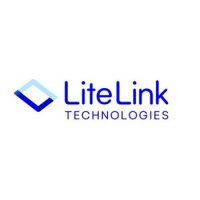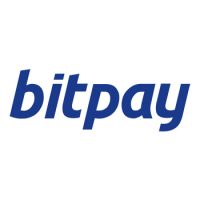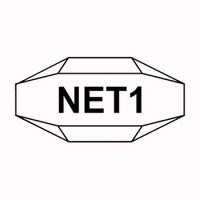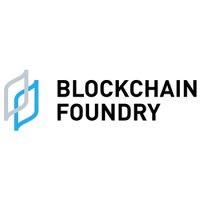Blockchain Press Releases
Laboratory Information System (LIS) Market worth $4.0 billion | MarketsandMarkets
CHICAGO, July 10, 2023 /PRNewswire/ — The laboratory information system (LIS) industry is set to witness significant growth and transformation in the near future. With the increasing demand for integrated and streamlined healthcare solutions, LIS is expected to play a vital role in optimizing laboratory operations, enhancing data management, and improving patient care. Advancements in technology, such as cloud computing, interoperability, and data analytics, will revolutionize the LIS landscape, enabling seamless integration with electronic health records (EHRs), telemedicine platforms, and other healthcare systems. This integration will facilitate efficient data exchange, enhance communication between healthcare professionals, and support evidence-based decision-making. Furthermore, the emergence of artificial intelligence and machine learning algorithms will enable automated data interpretation, quality control, and predictive analytics, leading to improved diagnostic accuracy, faster turnaround times, and enhanced patient outcomes. The LIS industry will also witness increased emphasis on cybersecurity and data privacy to safeguard patient information. Overall, the future of the LIS industry holds tremendous potential to revolutionize laboratory workflows, enhance healthcare delivery, and drive innovation in diagnostic medicine.
Laboratory Information System (LIS) Market in terms of revenue was estimated to be worth $2.4 billion in 2023 and is poised to reach $4.0 billion by 2028, growing at a CAGR of 10.8% from 2023 to 2028 according to a new report by MarketsandMarkets™. Factors such as the need for laboratory automation, the development of integrated LIS, and growing investments in the adoption of EHR systems and subsequent integration with LIS primarily drive the growth of this market. Furthermore, the rising emergence of AI and advanced analytics, growing demand for LIS in biobanks and biorepositories, and rising demand for personalized medicine would provide lucrative opportunities to solution providers. AI-powered algorithms can automate routine tasks in the laboratory, such as sample handling, data entry, and result validation. AI can analyze images from laboratory tests, such as histopathology slides or radiology scans, to aid in the diagnosis and detection of abnormalities. Machine learning algorithms can learn from large datasets and provide accurate interpretations, assisting pathologists and radiologists in their evaluations. This reduces manual errors, improves turnaround times, and frees up laboratory staff for more complex tasks.
Download an Illustrative overview: https://www.marketsandmarkets.com/pdfdownloadNew.asp?id=232312738
Browse in-depth TOC on “Laboratory Information System (LIS) Market”
161 – Tables
46 – Figures
262 – Pages
Laboratory Information System (LIS) Market Scope:
|
Report Coverage |
Details |
|
Market Revenue in 2023 |
$2.4 billion |
|
Estimated Value by 2028 |
$4.0 billion |
|
Growth Rate |
Poised to grow at a CAGR of 10.8% |
|
Market Size Available for |
2021–2028 |
|
Forecast Period |
2023–2028 |
|
Forecast Units |
Value (USD Billion) |
|
Report Coverage |
Revenue Forecast, Competitive Landscape, Growth Factors, and Trends |
|
Segments Covered |
Product, Component, Delivery Mode, End User, and Region |
|
Geographies Covered |
North America, Europe, Asia Pacific, Latin America and Middle East & Africa |
|
Report Highlights |
Updated financial information / product portfolio of players |
|
Key Market Opportunities |
Rising demand for personalized medicine |
|
Key Market Drivers |
Development of integrated LIS |
The integrated LIS segment is expected to be the fastest-growing laboratory information systems market, by product, during the forecast period.
Based on product, the laboratory information systems market is segmented into standalone LIS and integrated LIS. The integrated LIS segment is expected to grow at a higher CAGR during the forecast period. Integrated LISs allow seamless data sharing & interoperability across various healthcare settings and departments, enabling efficient communication among different stakeholders, such as laboratories, hospitals, clinics, and other healthcare providers. These systems facilitate the exchange of critical patient information, test results, and clinical data, leading to improved patient care coordination and continuity. The growth of the integrated LIS segment can be attributed to the advantages offered by these systems, such as enhanced data sharing & interoperability and robust analytics & reporting capabilities.
The hospital laboratories segment, by end-user, is expected to be the largest laboratory information systems market in 2023
Hospital laboratories would account for the largest share of the global end-user market in 2023. LIS solutions integrate various laboratory processes, including sample management, test ordering, result reporting, and data analysis. This integration reduces manual errors, enhances workflow efficiency, and promotes standardized practices. LIS solutions also provide a centralized platform for storing and managing patient and laboratory data. This enables healthcare professionals to access comprehensive patient information, track results, and analyze trends, leading to informed decision-making and improved patient care.
Asia Pacific is expected to be the fastest-growing laboratory information systems market during the forecast period.
The global market has been divided into regions including North America, Europe, Asia Pacific, Latin America, and Middle East & Africa. The Asia Pacific market is anticipated to exhibit the highest CAGR throughout the forecast period. Emerging economies in the Asia Pacific region, such as India and China, present lucrative growth opportunities for market participants. Factors contributing to this growth include the increasing adoption of digital healthcare technologies, improving IT infrastructure, the demand for affordable healthcare, favorable government norms, rising number of chronic diseases, rising standards and quality of hospital care and clinical testing, and the high incidence of cancer and chronic diseases are expected to boost the adoption of laboratory information systems solutions in Asia Pacific.
Request Sample Pages: https://www.marketsandmarkets.com/requestsampleNew.asp?id=232312738
Laboratory Information System (LIS) Market Dynamics:
Drivers:
- Development of integrated LIS
Restraints:
- Lack of integration standards for LIS
Opportunities:
- Rising demand for personalized medicine
Challenges:
- Requirement of specialized LIS solutions
Key Market Players:
Major players operating in the laboratory information systems market are Orchard Software Corporation (US), Clinisys (US), Oracle Corporation (US), Computer Programs and Systems, Inc. (US), CompuGroup Medical (Germany), Soft Computer Consultants, Inc. (US), American Soft. Solutions Corp. (US), Epic Systems Corporation (US), Altera Digital Health (US), Aspyra (US), Comp Pro Med Inc. (US), Computer Service & Support, Inc. (US), Clinical Software Solutions (US), GPI S.p.A. (Italy), LigoLab Information Systems (US), LabWare (US), LabVantage Solutions, Inc. (US), XiFin, Inc. (US), Seacoast Laboratory Data Systems (US), Veradigm LLC (US), WebPathLab (US), Apex Healthware (US), TECHNIDATA (France), Pathagility (US), HEX Laboratory Systems (US), Clinsis (Nicaragua), Alphasoft (Germany), and Dendi, Inc. (US).
Recent Developments:
- In May 2023, Clinisys acquired Promium, a provider of laboratory information management systems for environmental and analytical testing laboratories. This acquisition strengthens Clinisys’ position in public health and toxicology diagnostics and supports its global expansion.
- In January 2023, Orchard Software Corporation announced the release of its new Enterprise Toxicology solution, which aimed to enhance patient care in toxicology laboratories by providing information system tools. The solution offers features such as an integrated workflow engine, plate mapping tools for patient safety, medication consistency interpretation, and customizable report formats.
- In November 2022, Oracle Cerner and LabCorp formed a new collaboration to streamline lab operations for a leading nonprofit Catholic health system. Labcorp would manage hospital-based laboratories in 10 states using Cerner’s laboratory information system (LIS), aiming to enhance patient care and improve lab efficiency.
- In November 2022, CompuGroup Medical (CGM) announced two add-on acquisitions in the areas of data solutions and US laboratory information systems. The acquisition of Medicus LIS strengthens CGM’s position as a software leader in the independent US laboratory segment, while the acquisition of GHG business operations complements CGM’s portfolio of data-based solutions for the healthcare sector.
- In August 2022, Sparta Community Hospital, a critical access hospital in Sparta, Illinois, provided healthcare services to previously underserved areas through their Mobile Health Clinic. The hospital partnered with the Grand American World Trapshooting Championships to offer healthcare services. They leveraged the Evident EHR solution offered by Computer Programs and Systems, Inc. to provide primary care during the event. Sparta Community Hospital runs the full Evident EHR in its inpatient and clinic care settings.
Get 10% Free Customization on this Report: https://www.marketsandmarkets.com/requestCustomizationNew.asp?id=232312738
Laboratory Information System (LIS) Market Advantages:
- Streamlined Workflow and Efficiency: LIS improves laboratory workflow by automating processes such as sample tracking, result entry, and report generation. It streamlines communication between laboratory departments, reducing manual errors and ensuring efficient operations. This leads to increased productivity, faster turnaround times, and enhanced overall efficiency.
- Enhanced Data Management: LIS enables centralized and organized management of laboratory data. It provides a secure repository for storing and accessing patient information, test results, and other relevant data. This facilitates easy retrieval, data sharing, and analysis, leading to improved decision-making, research, and quality control.
- Integration with Healthcare Systems: LIS integrates with other healthcare systems, such as electronic health records (EHRs), picture archiving and communication systems (PACS), and billing systems. This integration enables seamless data exchange and communication between different departments and healthcare professionals. It ensures a holistic view of patient information, promotes interdisciplinary collaboration, and improves continuity of care.
- Quality Assurance and Regulatory Compliance: LIS incorporates quality control measures, ensuring adherence to regulatory standards and accreditation requirements. It facilitates standardization of laboratory procedures, tracks quality indicators, and provides comprehensive audit trails. These features enhance quality assurance, minimize errors, and support compliance with regulatory guidelines.
- Data Analytics and Decision Support: LIS leverages data analytics capabilities to provide valuable insights for clinical decision-making and process optimization. It enables trend analysis, performance monitoring, and identification of potential bottlenecks. With the integration of artificial intelligence and machine learning algorithms, LIS can offer predictive analytics, aiding in early detection of diseases and treatment planning.
- Cost Efficiency and Resource Optimization: LIS optimizes resource utilization by automating manual tasks, reducing paper-based processes, and minimizing duplication of efforts. It helps in inventory management, reducing wastage and unnecessary expenditures. Additionally, LIS aids in optimizing laboratory staffing, ensuring appropriate allocation of resources based on workload and priorities.
- Improved Patient Care and Safety: LIS enhances patient care and safety by reducing errors, improving result accuracy, and facilitating timely access to critical information. It enables real-time alerts for abnormal results, enhances specimen traceability, and ensures proper patient identification. These features contribute to improved diagnostic accuracy, patient management, and patient outcomes.
- Scalability and Adaptability: LIS systems are designed to accommodate the evolving needs of laboratories and healthcare organizations. They can scale up to handle increasing volumes of data and accommodate new tests and technologies. Additionally, LIS systems are adaptable to various laboratory settings, including clinical laboratories, research institutions, and reference laboratories.
In summary, the LIS market offers advantages such as streamlined workflow, enhanced data management, integration with healthcare systems, quality assurance, data analytics and decision support, cost efficiency, improved patient care and safety, and scalability. These advantages contribute to the growing importance of LIS in modern healthcare settings and highlight its potential to optimize laboratory operations, improve patient outcomes, and drive efficiency in healthcare delivery.
High-Throughput Screening Market – Report Highlights:
- Market Overview: This edition includes updated market dynamics and market ecosystems specific to the laboratory information systems market.
- Industry Trends: This new edition includes an updated market map, value chain analysis, revenue shift analysis, case studies, technology analysis, market ecosystem, regulatory landscape, Porter’s Five Forces analysis, and trends/disruptions impacting customers’ businesses that are specific to the laboratory information systems market.
- Company Profiles: In this edition, 28 players have been profiled, and the product portfolios of the key players have been updated. It also includes updated financial information from 2020 to 2022/2021 (wherever available).
- Recent Developments: Recent developments help understand the market trends and growth strategies adopted by the key players. For instance, in this market, product launches and enhancements increased during 2021–2023. Therefore, updated information for the mentioned period is provided.
- Latest Product Portfolio: Tracking the products offered by the companies helps in improved analysis of the market segmentation. This edition provides updated product portfolios of the companies profiled.
Related Reports:
Lab Automation Market – Global Forecasts to 2028
Laboratory Information Management System Market – Global Forecasts to 2028
Laboratory Informatics Market – Global Forecasts to 2026
Laboratory Centrifuge Market – Global Forecasts to 2026
Medical Equipment Maintenance Market – Global Forecasts to 2026
About MarketsandMarkets™:
MarketsandMarkets™ is a blue ocean alternative in growth consulting and program management, leveraging a man-machine offering to drive supernormal growth for progressive organizations in the B2B space. We have the widest lens on emerging technologies, making us proficient in co-creating supernormal growth for clients.
The B2B economy is witnessing the emergence of $25 trillion of new revenue streams that are substituting existing revenue streams in this decade alone. We work with clients on growth programs, helping them monetize this $25 trillion opportunity through our service lines – TAM Expansion, Go-to-Market (GTM) Strategy to Execution, Market Share Gain, Account Enablement, and Thought Leadership Marketing.
Built on the ‘GIVE Growth’ principle, we work with several Forbes Global 2000 B2B companies – helping them stay relevant in a disruptive ecosystem. Our insights and strategies are molded by our industry experts, cutting-edge AI-powered Market Intelligence Cloud, and years of research. The KnowledgeStore™ (our Market Intelligence Cloud) integrates our research, facilitates an analysis of interconnections through a set of applications, helping clients look at the entire ecosystem and understand the revenue shifts happening in their industry.
To find out more, visit www.MarketsandMarkets™.com or follow us on Twitter, LinkedIn and Facebook.
Contact:
Mr. Aashish Mehra
MarketsandMarkets™ INC.
630 Dundee Road
Suite 430
Northbrook, IL 60062
USA: +1-888-600-6441
Email: [email protected]
Research Insight: https://www.marketsandmarkets.com/ResearchInsight/laboratory-information-system-market.asp
Visit Our Website: https://www.marketsandmarkets.com/
Content Source: https://www.marketsandmarkets.com/PressReleases/laboratory-information-system.asp
Logo: https://mma.prnewswire.com/media/660509/MarketsandMarkets_Logo.jpg
View original content:https://www.prnewswire.co.uk/news-releases/laboratory-information-system-lis-market-worth-4-0-billion–marketsandmarkets-301872679.html

Blockchain Press Releases
Bybit and St. Paul American Scholars School Furthers Partnership Commitment in Bybit’s HQ Visit

DUBAI, UAE, May 2, 2025 /PRNewswire/ — Bybit, the world’s second-largest cryptocurrency exchange by trading volume, extended a warm welcome to an international delegation from the St. Paul American Scholars (SPAS), a top international school in Korea on Monday. The visit is part of a joint initiative between Bybit and SPAS dedicated to fostering the next generation of blockchain innovators through a series of academic and educational programs.
Ryan Kim, Head of SPAS, and Jinny Kim, Director of SPAS, were greeted by Helen Liu, COO of Bybit at the Bybit headquarters in Dubai. The official visit underscores the institutions’ shared commitment to building the partnership from the ground up, and creating a knowledge base to prepare SPAS students for the future of technology and the blockchain-enabled economy.
In the academic year of 2025/26, Bybit has committed a $100,000 scholarship to 300 SPAS students of St. Paul American Scholars (SPAS). The broader theme of the collaboration centers on collective learning and community sharing, which aligns with SPAS’s philosophy of building a closely knitted community for educators, parents, and students. Bybit will organize interactive educational sessions on campus to fill the knowledge gap between the demands for future-ready skills and traditional academic resources.
The fast moving blockchain landscape is central to a changing world. Parents and students today are increasingly aware of the possibilities and potential challenges of the dawning on-chain economy. The new dynamics will require creators and contributors to be equipped with understanding of blockchain technologies, to develop their passion, and to project their creativity onto positive causes. Through workshops and interactive events, the Bybit and SPAS initiative stands to leave a profound impact on blockchain education for international students in SPAS.
SPAS representatives boarded the crypto express to the world of digital assets at the Bybit headquarters, sharing unique perspectives as educators and first-hand insights from Liu at the frontier of the digital economy.
“We are proud to welcome the SPAS family to Bybit’s headquarters, and we hope this will become the starting point of SPAS students’ blockchain journey. The value of blockchain education is not only giving students a headstart in understanding the digital economy, but also to inspire them to think about changing the world for the better with a powerful technology that will one day be entirely at their disposal,” said Helen Liu, COO of Bybit.
“It is a great honor for Saint Paul International School to establish a meaningful partnership with Bybit, a global leader in blockchain technology. This visit to Bybit’s headquarters in Dubai was more than just a meeting; it was a precious opportunity to build a foundation of deep mutual trust,” said Ryan Kim, Head of SPAS. “Bybit’s warm-hearted commitment to providing scholarships for Saint Paul International School students and planning continuous social contribution programs deeply moved us all. We firmly believe that, with its sincere vision and values, Bybit will continue to shine as a world-leading company,” he said.
The SPAS delegation toured the Bybit Crypto Ark Experience Store, a new venue at Bybit’s Dubai headquarters that showcases blockchain innovation and provides an open space for crypto collaborations. Since opening, the store has attracted hundreds of visitors, entrepreneurs, and crypto enthusiasts contributing to the regional ecosystem.
Established in 2015, SPAS operates four campuses across Korea’s major metropolitan areas and is recognized as a leading American educational institution with full accreditation from multiple organizations. SPAS also offers international exchange programs through partnerships with schools in New York, Canada, and the UK, providing students with opportunities to experience diverse cultures and global perspectives.
#Bybit / #TheCryptoArk
About Bybit
Bybit is the world’s second-largest cryptocurrency exchange by trading volume, serving a global community of over 60 million users. Founded in 2018, Bybit is redefining openness in the decentralized world by creating a simpler, open and equal ecosystem for everyone. With a strong focus on Web3, Bybit partners strategically with leading blockchain protocols to provide robust infrastructure and drive on-chain innovation. Renowned for its secure custody, diverse marketplaces, intuitive user experience, and advanced blockchain tools, Bybit bridges the gap between TradFi and DeFi, empowering builders, creators, and enthusiasts to unlock the full potential of Web3. Discover the future of decentralized finance at Bybit.com.
For more details about Bybit, please visit Bybit Press
For media inquiries, please contact: [email protected]
For updates, please follow: Bybit’s Communities and Social Media
Discord | Facebook | Instagram | LinkedIn | Reddit | Telegram | TikTok | X | Youtube

Photo – https://mma.prnewswire.com/media/2678692/Bybit.jpg
Logo – https://mma.prnewswire.com/media/2267288/Logo.jpg
![]() View original content:https://www.prnewswire.co.uk/news-releases/bybit-and-st-paul-american-scholars-school-furthers-partnership-commitment-in-bybits-hq-visit-302445132.html
View original content:https://www.prnewswire.co.uk/news-releases/bybit-and-st-paul-american-scholars-school-furthers-partnership-commitment-in-bybits-hq-visit-302445132.html

Blockchain Press Releases
From Exchange to Ecosystem Builder: MEXC Celebrates 7th Anniversary at TOKEN2049 Dubai with $300M Ecosystem Development Fund Launch

VICTORIA, Seychelles, May 2, 2025 /PRNewswire/ — MEXC, a leading global cryptocurrency exchange serving over 36 million users, concluded its successful participation as a Title Sponsor at Token2049 Dubai, where the company celebrated its milestone 7th anniversary and announced a groundbreaking $300 million ecosystem development fund.
7 Years of Excellence: A Foundation for Ecosystem Expansion
The premier crypto event, which took place from April 30 to May 1, 2025 in Dubai, provided MEXC with the perfect platform to commemorate seven years of growth and innovation in the cryptocurrency space. During the celebratory “Celebra7e MEXC Cocktail Party”, Tracy Jin, COO of MEXC, delivered an inspiring opening speech highlighting the exchange’s remarkable journey.
“Seven years may sound short, but in the fast-moving world of crypto, it’s a lifetime,” Jin told attendees. “To thrive in this ever-evolving space takes resilience, vision, and trust—and we’ve only made it this far because of you.”
Jin revealed impressive growth metrics: the MEXC team has nearly doubled to 2,000 employees across Growth, R&D, and Business Support divisions. The platform now offers more than 3,000 crypto assets and has built a community of over 2.25 million Twitter followers and approximately 193,000 Telegram members.
“We’ve also hosted over 2,293 airdrop events, distributing over $136 million in rewards,” Jin added. “This is our way of thanking you for your ongoing trust and loyalty.”
$300 Million MEXC Ecosystem Development Fund Unveiled
The highlight of MEXC’s Token2049 Dubai participation was the official announcement of its $300 million Ecosystem Development Fund, signaling the company’s strategic evolution from an exchange service to a comprehensive ecosystem builder. The five-year fund represents MEXC’s commitment to fostering blockchain innovation across multiple sectors.
The fund will focus on strategic investments in public chains, stablecoins, wallets, and media platforms, providing not only financial backing but also leveraging MEXC’s exchange business cooperation to deliver enhanced value to portfolio projects. This dual approach positions fund recipients to benefit from both capital investment and operational synergies within the MEXC ecosystem.
“After seven years of market resilience, MEXC is uniquely positioned as a trusted ecosystem partner,” said Tracy Jin. “This fund represents our vision for the future of decentralized finance and our commitment to supporting the next generation of blockchain innovations.”
IgniteX: $30 Million CSR Initiative for Web3 Talent Development
Alongside the ecosystem fund, MEXC Ventures launched “IgniteX” – a $30 million, five-year CSR initiative to foster Web3 talent and innovation. The program will support early-stage startups, research, developer communities, and academic institutions, with focus on decentralized infrastructure, AI-blockchain integration, stablecoins, and fintech. IgniteX combines mentorship, education, and funding to build a future-ready ecosystem and prepare the next generation of Web3 users and leaders.
Industry Insights Shared at Panel Discussion
MEXC’s presence at Token2049 Dubai extended beyond celebrations and announcements to include thought leadership. Tracy Jin participated in a panel discussion titled “What’s Next for Crypto Markets: The Exchange Perspective” on the OKX main stage on 1 May. The discussion explored upcoming trends, challenges, and opportunities in the cryptocurrency exchange sector, with Jin offering insights drawn from MEXC’s seven years of operational experience.
During the panel, Jin emphasized MEXC’s continued focus on product innovation and market expansion while maintaining its core commitment to being “Your Easiest Way to Crypto” for users worldwide.
Successful Side Events Strengthen Community Connections
MEXC hosted multiple successful side events throughout TOKEN2049 Dubai, including the “Celebra7e MEXC Cocktail Party,” “Dao People x MEXC: VIP Party” at BIRDS, a “TR KOL Exclusive Yacht Party” aboard Xclusive Yachts, and participation in the “AFTER2049” event at Be Beach. These gatherings provided valuable networking opportunities for industry professionals, partners, and MEXC community members.
At the company’s exhibition booth, MEXC showcased its revolutionary DEX+ platform and displayed a collection of seven limited-edition anniversary merchandise items that proved popular with attendees. Throughout the conference, MEXC representatives conducted product demonstrations, engaged with visitors, and discussed potential partnerships.
Behind the scenes, Jin noted that MEXC’s service team has resolved more than 1 million user requests and recovered over $1.8 million in user assets—underscoring the company’s commitment to security and user experience.
Looking Ahead
As Token2049 Dubai concluded, MEXC’s successful participation not only celebrated its past achievements but also laid the groundwork for its future vision. The announcement of the $300 million Ecosystem Development Fund, combined with ongoing product innovations and market expansion efforts, positions MEXC for continued growth in its eighth year and beyond.
About MEXC
Founded in 2018, MEXC is committed to being “Your Easiest Way to Crypto.” Serving over 36 million users across 170+ countries, MEXC is known for its broad selection of trending tokens, everyday airdrop opportunities, and low trading fees. Our user-friendly platform is designed to support both new traders and experienced investors, offering secure and efficient access to digital assets. MEXC prioritizes simplicity and innovation, making crypto trading more accessible and rewarding.
MEXC Official Website | X | Telegram | How to Sign Up on MEXC
Risk Disclaimer:
The information provided in this article regarding cryptocurrencies does not constitute investment advice. Given the highly volatile nature of the cryptocurrency market, investors are encouraged to carefully assess market fluctuations, the fundamentals of projects, and potential financial risks before making any trading decisions.

Photo – https://mma.prnewswire.com/media/2677827/1920_1080.jpg
Logo – https://mma.prnewswire.com/media/2668118/MEXC_new_Logo.jpg
![]() View original content:https://www.prnewswire.co.uk/news-releases/from-exchange-to-ecosystem-builder-mexc-celebrates-7th-anniversary-at-token2049-dubai-with-300m-ecosystem-development-fund-launch-302444954.html
View original content:https://www.prnewswire.co.uk/news-releases/from-exchange-to-ecosystem-builder-mexc-celebrates-7th-anniversary-at-token2049-dubai-with-300m-ecosystem-development-fund-launch-302444954.html

Blockchain Press Releases
Interlace Debuts at Token2049 to Accelerate Web2-Web3 Integration Across MENA

NEW YORK, May 2, 2025 /PRNewswire/ — Interlace, a pioneering financial innovation platform bridging traditional (Web2) and decentralized (Web3) ecosystems, is making a high-impact debut at Token2049, the world’s largest cryptocurrency conference. The event draws more than 15,000 global Web3 leaders, investors, developers, and policymakers to the heart of the Middle East’s burgeoning digital economy.
As the MENA region solidifies its status as a strategic launchpad for blockchain and digital finance, Interlace is leveraging Token2049 to highlight its global ambitions and regional integration efforts. Through a combination of keynote speeches, panel participation, side events, and interactive showcases, the company will spotlight its technological breakthroughs, regulatory strategies, and innovative Web3 solutions designed to advance financial inclusion and digital infrastructure.
Token2049 has cemented its position as the premier global platform for blockchain dialogue and innovation. With MENA emerging as a magnet for crypto and fintech enterprises—thanks to its progressive regulatory framework and strong investor base—the event provides fertile ground for companies like Interlace to scale their operations in high-growth markets.
Driving Web3 Compliance and Strategy in the Middle East
Michael Wu, Founder and CEO of Interlace, was recently invited to speak at the event Mastering Web3 Finance and Compliance: Blockchain & Beyond, where he joined a panel discussion exploring regulatory frameworks and emerging trends in the Middle East’s Web3 ecosystem. Drawing on Interlace’s extensive global experience, Wu provided a deep dive into the region’s compliance landscape. He emphasized the UAE’s regulatory efficiency as a strategic advantage for Web3 companies, stating: “In MENA, it takes only a few months to obtain a Virtual Asset Service Provider (VASP) license, whereas the same process can take up to two years in Singapore. In the United States, conflicting federal and state regulations create persistent uncertainty for businesses.” This favorable regulatory environment, he noted, has enabled Interlace to accelerate its expansion into the Middle Eastern market.
Wu also outlined Interlace’s proactive compliance strategy, highlighting early regulatory investment as a foundation for building long-term competitive advantages. “We’ve secured key licenses—including MSB (Money Services Business), MSO (Money Service Operator), and VASP—across major markets such as Hong Kong, the U.S., and Europe,” he shared. He stressed the importance of integrating technology with compliance, citing the use of biometric solutions to streamline Know Your Customer (KYC) procedures. This approach not only ensures regulatory adherence but also enhances user accessibility. “Compliance is not a cost,” Wu asserted. “It’s the foundation of brand trust. For institutional partners and investors, regulatory compliance is non-negotiable—and critical for sustainable growth.”
Addressing the convergence of traditional finance and Web3, Wu presented Interlace’s multi-license model as a blueprint for cross-border innovation. “Our crypto payment card enables seamless interoperability between on-chain digital assets and off-chain consumer transactions,” he explained. “This functionality requires a high degree of cross-jurisdictional compliance.” Wu concluded by sharing that Interlace is actively expanding its footprint in the Middle East, bringing its regulatory expertise and compliance technology to support the region’s rapidly evolving blockchain infrastructure.
Unveiling Innovation at Premier Side Events
Beyond the main conference, Interlace will engage audiences at high-profile side events including 1001 Crypto Nights, Gilded Mirage, and the Hack Seasons Conferencei. These gatherings delve into themes such as the convergence of legacy finance with decentralized protocols and the region’s unique role in accelerating Web3 adoption.
Interlace will showcase its Card-as-a-Service (CaaS) API solutions tailored for the PayFi sector, as well as its custom-designed physical banking cards—which double as exclusive, limited-time gift cards. These cards demonstrate real-time “on-chain to off-chain” transaction capabilities, offering attendees a tangible experience of seamless Web3-enabled payments.
A Strategic Leap Toward Global and Regional Impact
Interlace’s presence at Token2049 is more than a product showcase—it represents a pivotal step in the company’s global expansion and MENA market penetration. As the company deepens its engagement in the region, it aims to collaborate with local institutions to build robust, inclusive digital financial ecosystems.
Wu reflected on the significance of the Middle East in shaping the future of blockchain finance: “The Middle East is rapidly evolving from an energy stronghold into a center of digital innovation. Its open regulatory approach and dynamic capital environment make it a strategic region for Web3 transformation. At Interlace, we’re committed to co-creating resilient financial infrastructure with local partners—enabling businesses and users to fully benefit from the potential of blockchain technology. We see MENA as a future global benchmark for Web3 applications.”
![]() View original content:https://www.prnewswire.co.uk/news-releases/interlace-debuts-at-token2049-to-accelerate-web2web3-integration-across-mena-302444943.html
View original content:https://www.prnewswire.co.uk/news-releases/interlace-debuts-at-token2049-to-accelerate-web2web3-integration-across-mena-302444943.html

-

 Blockchain Press Releases7 days ago
Blockchain Press Releases7 days agoBTC Pricing Alert: Bitcoin Rebounds as Trump’s Trade War Comments Ignite Market Rally – Bybit x Block Scholes Report
-
Blockchain4 days ago
Mercurity Fintech’s Chaince Securities Appointed as Strategic Advisor for Classover’s Solana-Focused Treasury Strategy
-
Blockchain6 days ago
PFM Disrupts Wealth Management in 2025: Earn Digital Assets Risk-Free with Zero Fees
-
Blockchain5 days ago
Veriff and Legitify Partner to Streamline Cross-Border Digital Notarisation
-

 Blockchain5 days ago
Blockchain5 days agoBlocks & Headlines: Today in Blockchain – April 29, 2025 | Deloitte, TRON DAO, Miden, JPMorgan, Nuvve
-
Blockchain3 days ago
HODL 2025: Blockchain’s Brightest Minds. All in Dubai
-

 Blockchain3 days ago
Blockchain3 days agoSkyCrest Capital Launches SkyAlpha X 2.0 AI System and Innovative SkyFund Protocol (SKF)
-

 Blockchain Press Releases5 days ago
Blockchain Press Releases5 days agoWelcome to the 1V1 Trading Arena: Bybit Blends Gameplay With Real Crypto Wins for Pro and New Users






